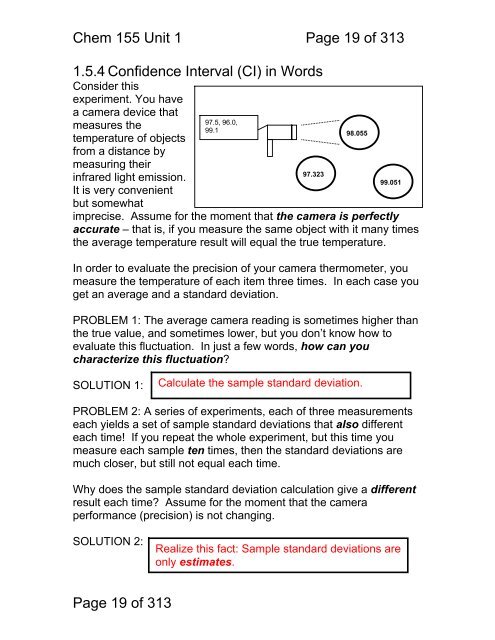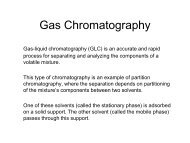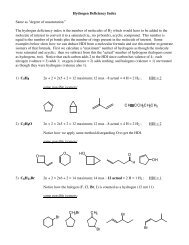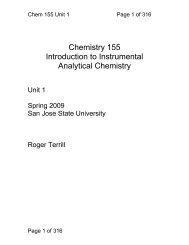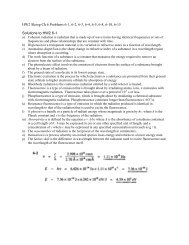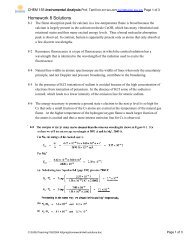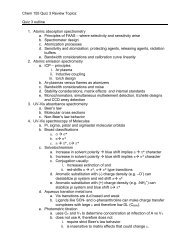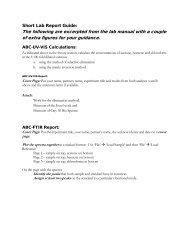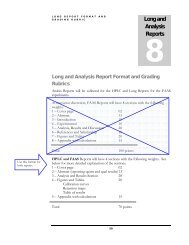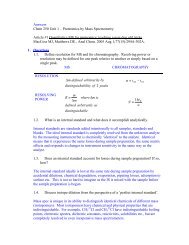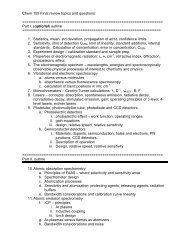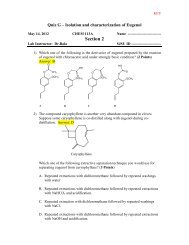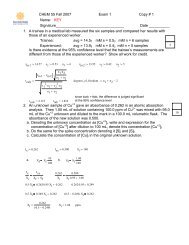Chemistry 155 Introduction to Instrumental Analytical Chemistry
Chemistry 155 Introduction to Instrumental Analytical Chemistry
Chemistry 155 Introduction to Instrumental Analytical Chemistry
You also want an ePaper? Increase the reach of your titles
YUMPU automatically turns print PDFs into web optimized ePapers that Google loves.
Chem <strong>155</strong> Unit 1 Page 19 of 3131.5.4 Confidence Interval (CI) in WordsConsider thisexperiment. You havea camera device thatmeasures thetemperature of objectsfrom a distance bymeasuring theirinfrared light emission.It is very convenientbut somewhat97.5, 96.0,99.197.32398.05599.051imprecise. Assume for the moment that the camera is perfectlyaccurate – that is, if you measure the same object with it many timesthe average temperature result will equal the true temperature.In order <strong>to</strong> evaluate the precision of your camera thermometer, youmeasure the temperature of each item three times. In each case youget an average and a standard deviation.PROBLEM 1: The average camera reading is sometimes higher thanthe true value, and sometimes lower, but you don’t know how <strong>to</strong>evaluate this fluctuation. In just a few words, how can youcharacterize this fluctuation?SOLUTION 1:Calculate the sample standard deviation.PROBLEM 2: A series of experiments, each of three measurementseach yields a set of sample standard deviations that also differenteach time! If you repeat the whole experiment, but this time youmeasure each sample ten times, then the standard deviations aremuch closer, but still not equal each time.Why does the sample standard deviation calculation give a differentresult each time? Assume for the moment that the cameraperformance (precision) is not changing.SOLUTION 2:Realize this fact: Sample standard deviations areonly estimates.Page 19 of 313


